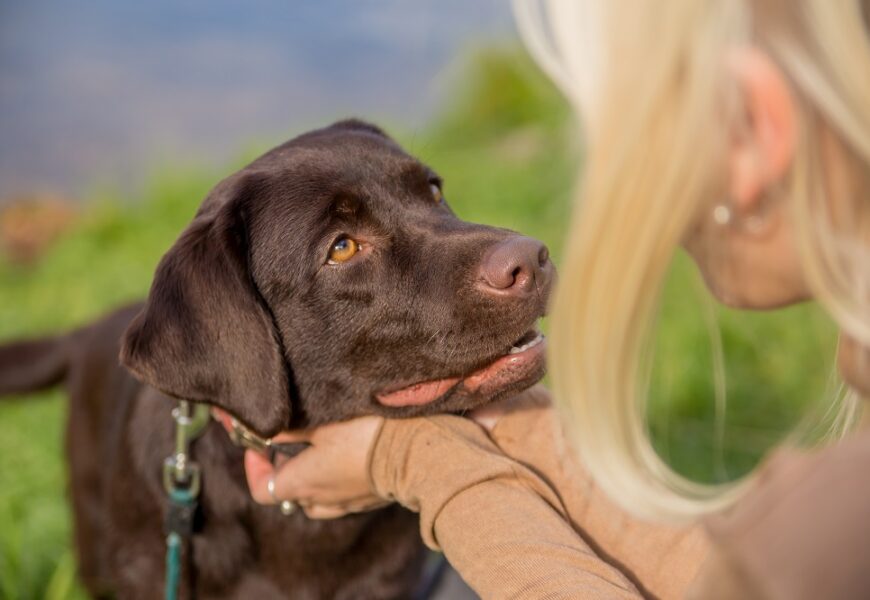Options for improving dental health.
by Jacqueline Fowler, RN MHA
Does your dog have stinky breath? Maybe it’s time for a routine teeth cleaning. Or maybe not.
Current canine dental health is wellness-based, offering products that promote and preserve dental health and procedures to address tartar, broken teeth, or periodontal disease. With so many products now available, it can be overwhelming to sketch out a dental wellness program for your pet. Before delving into treatment options and effects, let’s first look at the anatomy and physiology of periodontal disease and why a healthy mouth is important.
It all starts with a base surface of biofilm. This is the natural coating of the tooth with its own healthy bacteria. Yet, just like unfriendly neighbors, “bad” bacteria move in, encroaching on the healthy biofilm. Without management, this bacterium turns to plaque and the plaque converts to tartar, which can build to such a level that it separates the gumline from the tooth, enabling harmful bacteria to erode the gum and supporting bone. Without attention, bacteria below the gumline can lead not only to abscess formation and tooth loss, but translocation of that bacteria to other organs.
Dental wellness starts with protection of healthy biofilm. A host of supplements are available for adding to food or water to reduce plaque formation. Probiotics that protect the stomach microbiome also protect dental biofilm and are marketed in powders to sprinkle on food, capsules, chewables, and prescription dog foods. The active bacterium in these probiotics is Enterococcus faecium and can be found in Purina FortiFlora powder. PetLabCo has a powder to sprinkle on dog food with probiotics of Lactobacillius helveticus, L. rhamnosus, and Bifidobacterium longum with natural additives of brown algae, rosemary leaf extract, green tea, and perilla seed extract to assist with breath odors. These products may reverse plaque and tartar buildup, slow the progress of existing plaque, and lengthen the time between professional cleanings when used correctly.
Water additives and mouthwashes also are available to reduce dental plaques and calculus accumulation. According to the Journal of Animal Science, periodontal disease affects 80 percent of dogs age three and older. Water additives include VetAquadent, FR3SH, and VirBac, and include erythritol, pomegranate, and inulin. (Erythritol is a sugar alcohol, safe for dogs in small amounts, not to be confused with xylitol, which is harmful to dogs.) Be sure to read labels; some water additives contain parabens, which can be harmful to dogs. This writer tried water additives on her own dogs without anecdotal findings – the dogs refuse to drink any water with the additive! But my own dogs are a couple of divas; yours may accept the addition.
Mechanical cleaning and chewing are part of the dental care arsenal. In 2006, Greenies were recalled due to the chews getting lodged in the esophagus or intestine and not breaking down. Since then, their formula has improved. Greenies help to soften developing plaque. OraVet is a prescription daily dental chew, also green, that coats the teeth to prevent bacterial attachment to the healthy biofilm while scrubbing the tooth to remove plaque. Both Greenies and OraVet can turn the dog’s stool green. Dental chews given one hour before feeding showed less gingivitis, plaque, and calculus formation in a 2005 study, as described in the Journal of Veterinary Dentistry.
These products should be used in conjunction with tooth brushing. Most veterinarians supply free toothbrushes, but they can also be purchased at pet and feed stores. Dog toothbrushes are much longer than human toothbrushes, with a small head at one end and a large head at the other. Once your dog is comfortable with you handling his muzzle and putting your hands in his mouth, you can advance to putting canine toothpaste on the brush and letting your dog nibble on it. From there, you can begin brushing teeth with the goal to advance to the whole mouth. Remember to use canine toothpaste. Avoid human toothpaste, which contains high levels of sodium and also xylitol, which is toxic to dogs. In a perfect world, canine tooth brushing would occur every day; most veterinarians are happy if tooth brushing occurs one to four days per week.
Dental cleanings are minor procedures for dogs but require anesthesia, which is harder on large dogs over age 10, making preventative care all the more important. Pet insurance does not cover dental care unless an add-on wellness package is purchased, so dental procedures are typically out-of-pocket.
Preventive care with products that work for you and your dog can expand the time between dental cleanings and prevent stinky dog breath.




